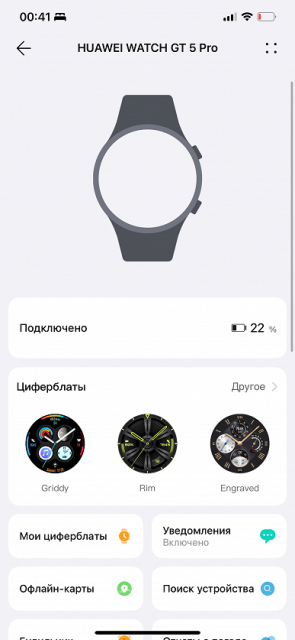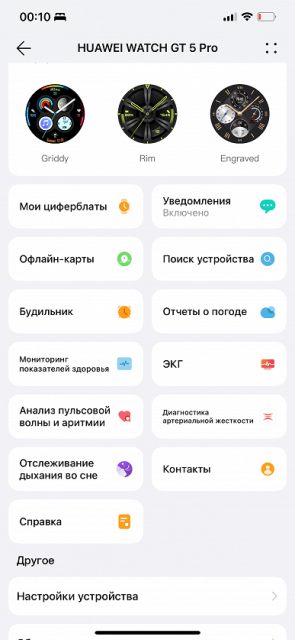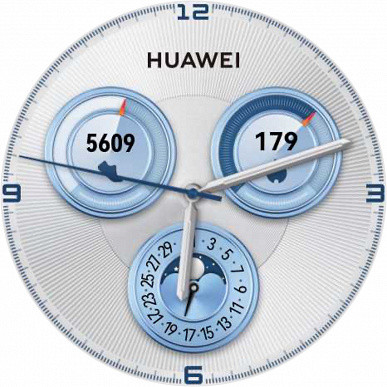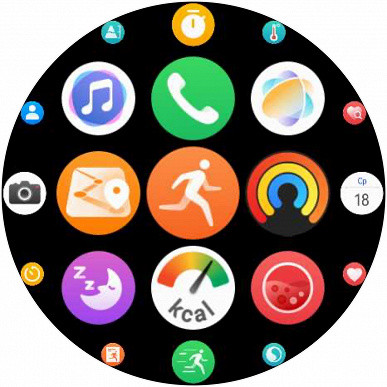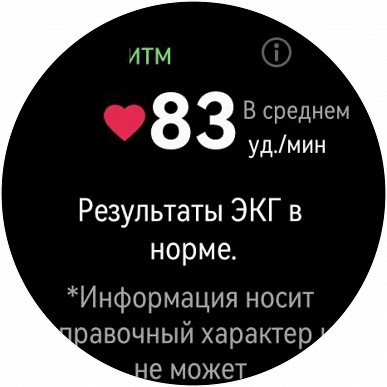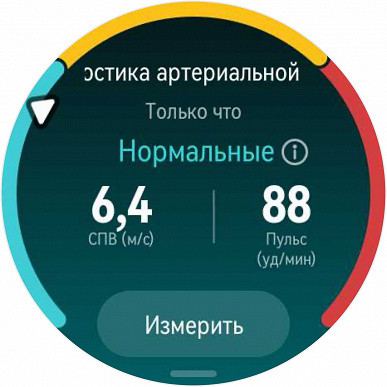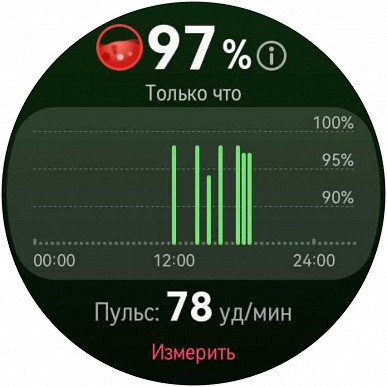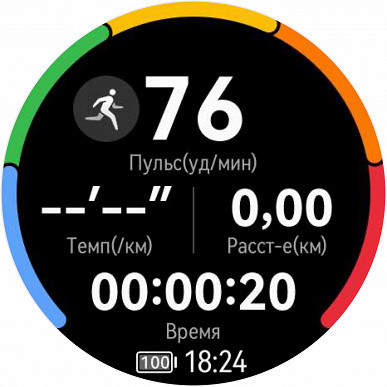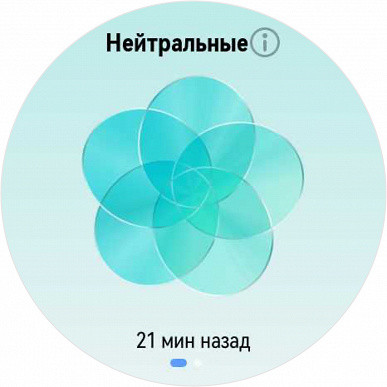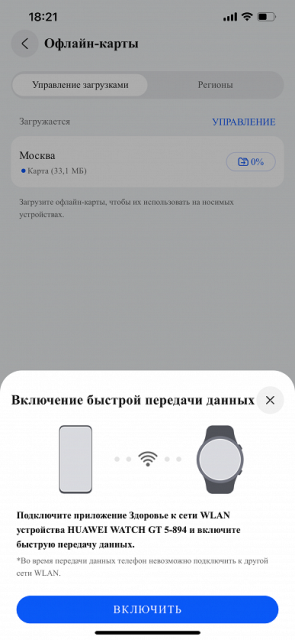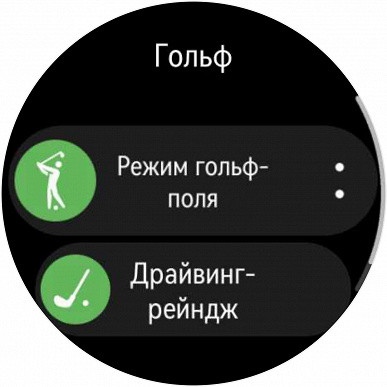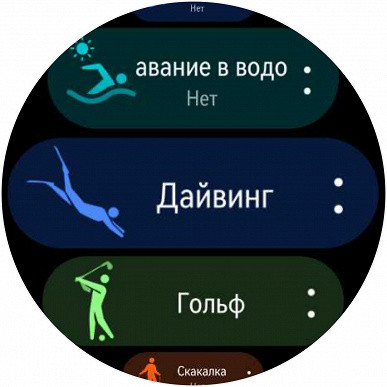With the fifth generation of the GT series smartwatch, Huawei has reintroduced the Pro variants that were missing from the fourth generation. Now users have access to relatively affordable watches made from premium materials such as titanium alloys and ceramics. However, the standard GT 5 also offers a stylish design and a wide range of functions. We tested several models in this series.
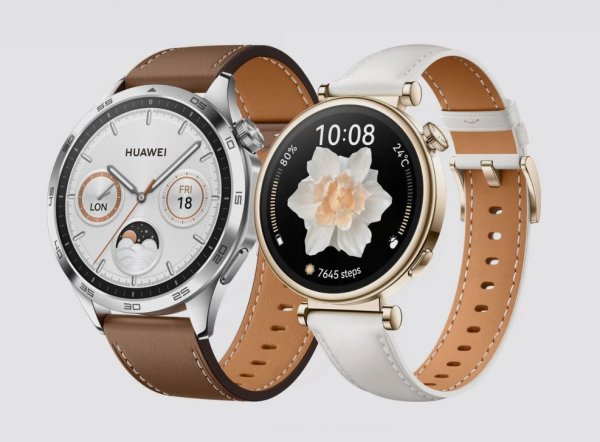
The regular GT 5 watch comes in two basic versions. The “men’s” model has a 46 mm diagonal and a more masculine design with a steel case and bezel, as well as a choice of silicone, silicone-nylon or leather strap. The “women’s” version is more compact — 41 mm, with a thinner case in gold or silver shades. It is offered with a Milanese bracelet (made of miniature segments with a magnetic clasp) or leather and silicone straps.
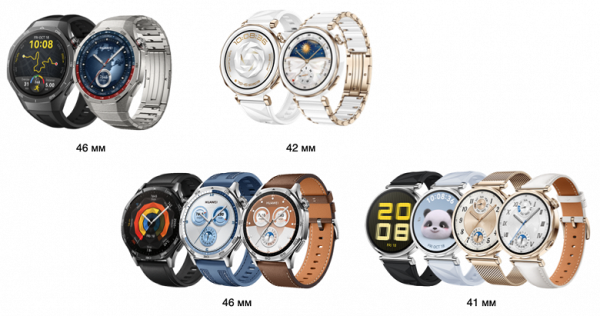
The Pro models also come in two sizes, 46mm and 42mm. The men's version is made of titanium alloy, while the women's version is made of nanocrystalline ceramic. Both versions are available with link bracelets and silicone straps.
The prices for the watches range from $207 to $414, depending on the materials. For $240, you can also get the 46mm version (but this will be the regular GT 5, not the GT 5 Pro).
Now let's look at the differences in specifications between the Huawei Watch GT 5 Pro, GT 5, and GT 4.
| Huawei Watch GT 5 Pro | Huawei Watch GT 5 | Huawei Watch GT 4 | |
|---|---|---|---|
| Screen | round, flat, AMOLED, ∅1.43″, 466×466 (326 ppi)/∅1.32″, 466×466 (352 ppi) | round, flat, AMOLED, ∅1.43″, 466×466 (326 ppi)/∅1.32″, 466×466 (352 ppi) | round, flat, AMOLED, ∅1.43″, 466×466 (326 ppi)/∅1.32″, 466×466 (352 ppi) |
| Body material | titanium alloy + nanocrystalline ceramics / nanocrystalline ceramics | stainless steel + polymer fiber composite materials | stainless steel + polymer fiber composite materials |
| Sensors | barometer, accelerometer, gyroscope, optical heart rate sensor with support for ECG and arterial stiffness measurement, ambient light sensor, compass, depth sensor, automatically working pulse oximeter (SpO2) | barometer, accelerometer, gyroscope, optical heart rate sensor, ambient light sensor, compass, depth sensor, automatic pulse oximeter (SpO2) | barometer, accelerometer, gyroscope, optical heart rate sensor, ambient light sensor, compass, depth sensor, automatic pulse oximeter (SpO2) |
| Connection | Bluetooth 5.2, NFC (Huawei Pay only) | Bluetooth 5.2, NFC (Huawei Pay only) | Bluetooth 5.2, NFC (Huawei Pay only) |
| Satellite navigation | GPS, GLONASS, BeiDou, Galileo, QZSS | GPS, GLONASS, BeiDou, Galileo, QZSS | GPS, GLONASS, BeiDou, Galileo, QZSS |
| Microphone, speaker | There is | ||
| Protection | from water (5 atm), with the possibility of diving to a depth of 40 m | from water (5 atm) | from water (5 atm) |
| operating system | HarmonyOS 5.0 | HarmonyOS 5.0 | HarmonyOS 4.0 |
| Compatibility | HarmonyOS 2.0+, smartphones on Android 8+ and iOS 13+ (limited functionality) | HarmonyOS 2.0+, smartphones on Android 8+ and iOS 13+ (limited functionality) | HarmonyOS 2.0+, smartphones on Android 8+ and iOS 13+ (limited functionality) |
| Battery | not reported | not reported | 524/323 mAh |
| Dimensions | ∅46.3×10.9 / ∅42.5×9.6 mm | ∅45.8×10.7 / ∅41.3×9.5 mm | ∅46×10.9 / ∅41.3×9.8 mm |
| Weight without strap | 48/37 g | 48/37 g | 48/37 g |
As you can see, the differences in characteristics are minor: the screen of the previous generation and both current families remained the same, the dimensions also remained almost unchanged, although more expensive materials appeared in the Pro models. A significant innovation is the support for measuring ECG and arterial stiffness, available only in the Pro versions.
Equipment
The following models were received for testing: two “men’s” versions of the GT 5 Pro, as well as one “men’s” and one “women’s” version of the GT 5. The boxes for all “men’s” GT 5 and GT 5 Pro watches are designed in black, while the “women’s” version has white packaging. This color differentiation is maintained in this generation, as in the previous one.
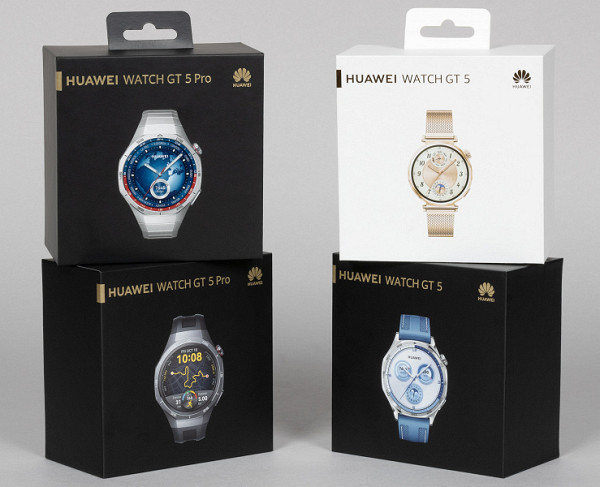
As always, regardless of the color of the packaging, the watch is located in a cardboard slot and is reliably protected from possible impacts during transportation.
There are no changes in the kit, except for one detail: owners of the model with a metal bracelet receive a small cardboard case with four additional links. These links allow you to adapt the device to a larger hand. In addition, if necessary, you can remove the extra links if your hand, on the contrary, is thin and the watch is not fixed properly.
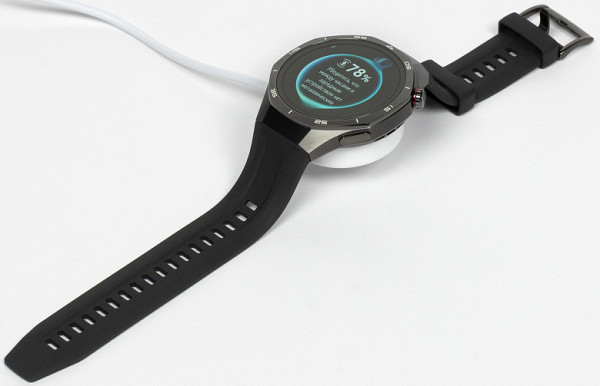
Otherwise, everything remains standard. The main thing is that the charger is still universal and compatible with both previous generation models and current versions. However, the presence of USB Type A raises some questions, given the rapid transition to USB Type C chargers. Nevertheless, in transport, for example, in the same Sapsan trains, USB Type A still prevails, which makes the traditional option more convenient in this context.
Design
Interestingly, the external differences between the “men’s” and “women’s” models are significantly greater than between the regular and Pro versions of the same size. All 46mm models have a rather masculine look thanks to a massive steel case with a double physical bezel — one bezel is located under the glass, and the other is on the outside, on which there are physical notches and numbers. A large rotating crown-button also emphasizes this brutal design.
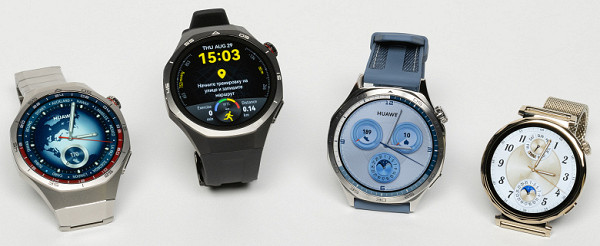
The 41mm model looks much more elegant and refined. It has no bezel at all, and the case is significantly thinner. The frame around the screen is minimal, which creates the illusion of a lack of borders, especially when using a dial with a black background — it seems that a gold or silver rim begins immediately behind the screen. Overall, we did not notice any changes compared to the same model last year. The photos below show both the 46mm and 41mm versions of the GT 5.
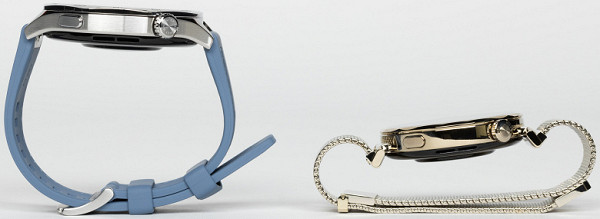
Like last year, it’s worth noting that the 41mm model is equipped with a Milanese steel bracelet, which is made up of many small links that are connected to each other. It looks very elegant and is comfortable to use. However, the strap of the larger GT 5 also deserves praise: it combines nylon and silicone elements, making it a great option for casual style and jeans.
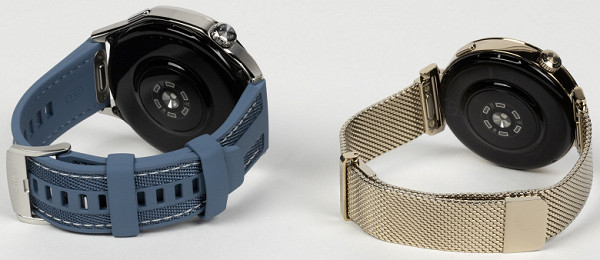
Now let's take a look at the Pro models. One of them is equipped with a bracelet made of large steel links that can be added or removed (there are four additional links in the kit), which allows you to achieve the most comfortable fit on your hand. The author of the review has a rather thin hand, and usually watches with such bracelets do not fit very well. However, with the Huawei Watch GT 5 Pro, such problems did not arise. Nevertheless, for active use, the traditional silicone strap, which the second model has, is preferable. It is worth noting that all straps and bracelets are removable, but their fastening is not quite standard, so it may be difficult to find alternative accessories from third-party manufacturers.
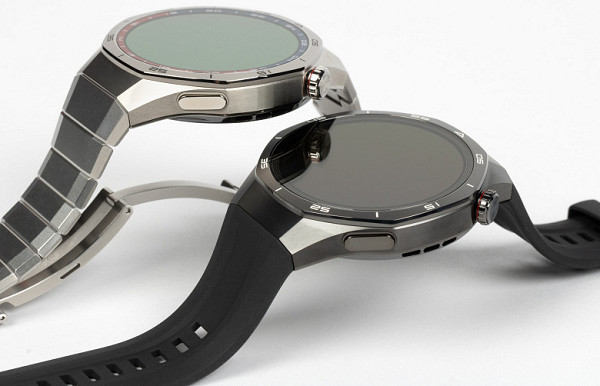
It's worth noting that all 46mm models, both Pro and regular, have a uniquely shaped outer bezel: an octagon with rounded corners. The photo below clearly shows these corners.
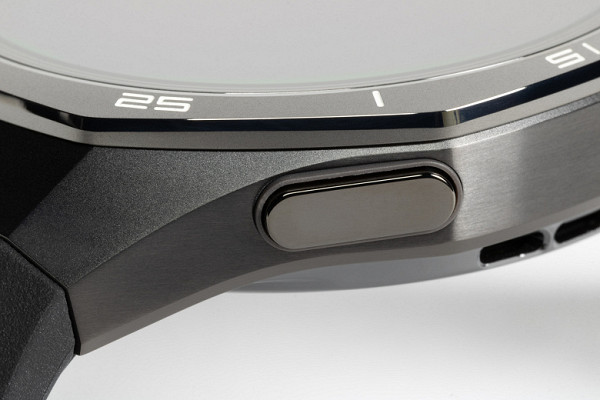
As for the buttons, their set and arrangement remained the same. Firstly, there is a wheel that performs scrolling and zooming functions, and also serves as the Home button. Secondly, there is a flat button below that starts workouts by default, but it can be reconfigured for another function. In the “women’s” versions, the wheel is smaller, and in the “men’s” version, it is larger.
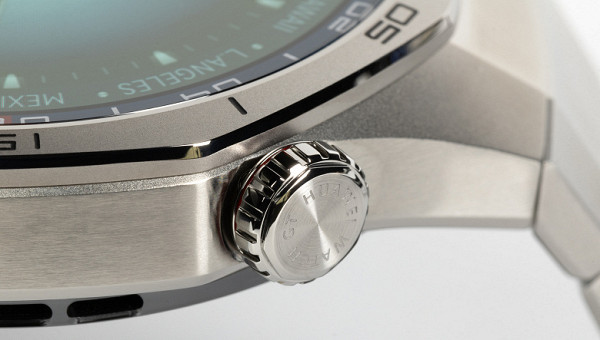
By the way, we note the finest engraving on the buttons (see photo above). And in general, the watch pleases with the quality of assembly and attention to detail.
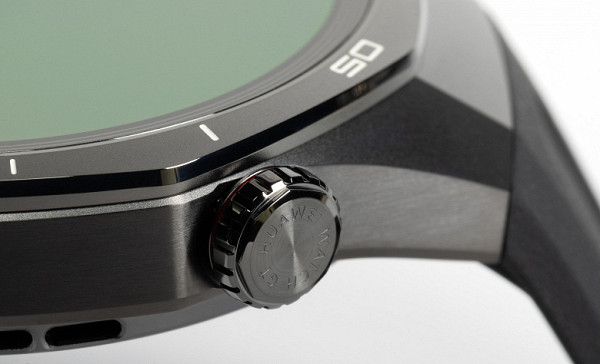
Another important point regarding the buttons: now, pressing both buttons simultaneously allows you to take screenshots, which are automatically saved to the smartphone gallery. However, there is one oddity: the screenshot resolution is 1398×1398, which is three times larger on each side than the actual screen resolution. As a result, the images look stretched and distorted by artifacts. Nevertheless, the presence of such a function is a pleasant addition.
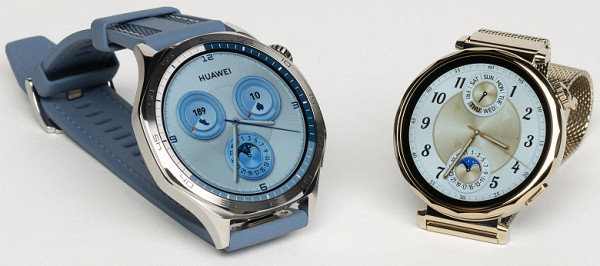
The watch fits perfectly on the hand. Moreover, the straps of all four versions can be adjusted to the hand of any thickness, which is especially important considering the functions of measuring ECG, pulse, arterial stiffness, and so on.
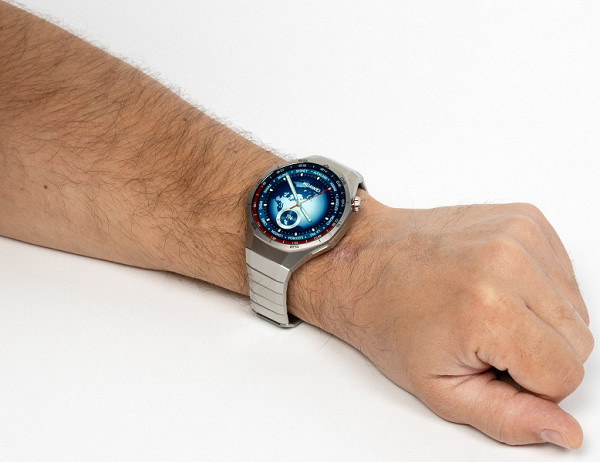
To sum it up, there haven't been any significant changes over the past year. However, the lineup has seen models made from better quality materials, and the straps, especially the nylon-silicone ones, have received cosmetic improvements. Overall, a great design has gotten a little better.
Screen
The watch is available in two sizes: with a screen diameter of 1.32 inches and 1.43 inches. In both cases, the screen is completely round and has no dead zones. The resolution is the same — 466 × 466 pixels, which provides a pixel density of 352 and 326 ppi, respectively. These characteristics can be considered quite decent. The manufacturer maintains the same resolution for many models to simplify the development of applications for watches.
We conducted a detailed examination of the screens using measuring devices, and below is the conclusion of Alexey Kudryavtsev, we will start with the GT 5 model with a diameter of 46 mm.
The front surface of the screen is made of a glass plate with a mirror-smooth surface, resistant to scratches. Judging by the reflection of objects, the anti-glare properties are better than those of the Google Nexus 7 (2013) screen. The doubling of the reflection is weak, which indicates that there is no air gap between the layers of the screen. The outer surface has pronounced oleophobic properties, significantly superior to those of the Nexus 7, which makes it easier to remove fingerprints and reduces their appearance.
The maximum brightness measured in flashlight mode is 545 cd/m². Taking into account the excellent anti-glare properties, this brightness allows for good visibility of the screen in strong light conditions, such as on a bright day. There is also an automatic brightness control function, the operation of which is adjustable and, according to subjective observations, functions adequately.
The graph of the dependence of brightness on time shows a significant modulation with a frequency of 120 Hz. When moving the watch quickly relative to the eyes, a stroboscopic effect can be noticed in some images. However, in normal use, flickering is not observed due to the low duty cycle and different modulation phases across the screen area. Below are the graphs of brightness (vertical) depending on time (horizontal) for maximum brightness.
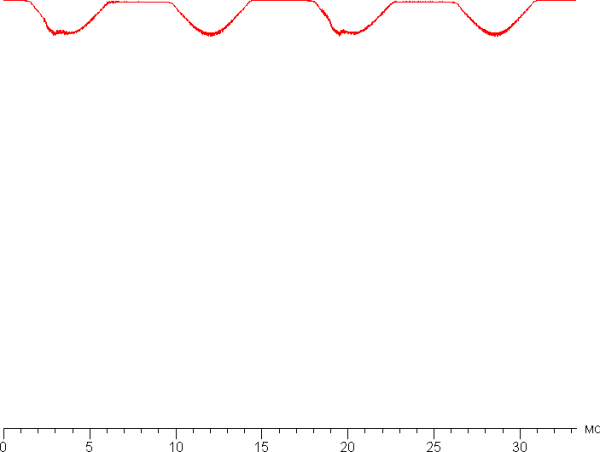
This screen uses an OLED matrix — an active matrix based on organic light-emitting diodes. The full-color image is formed by subpixels of three colors: red ®, green (G) and blue (B) in equal proportions, which is confirmed by a fragment of a microphotograph:
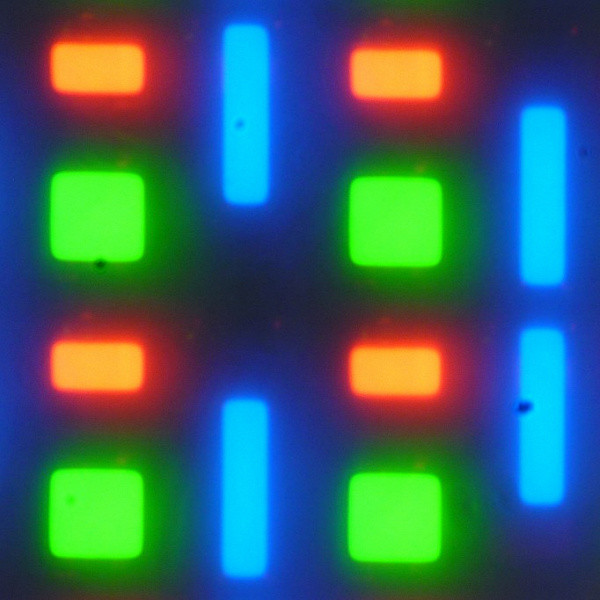
The spectra are typical for OLEDs — the primary color regions are well separated and appear as relatively narrow peaks:
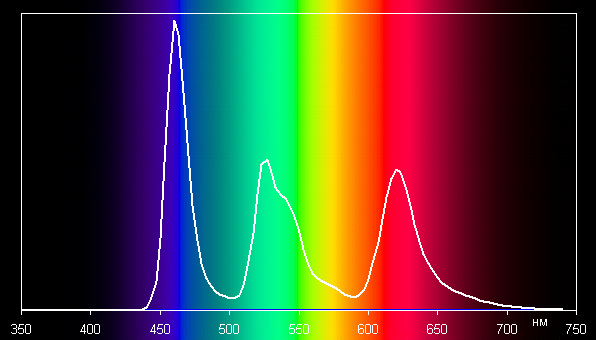
The color temperature of the white field is approximately 7800 K, and the deviation from the spectrum of an absolutely black body (ΔE) is at the level of about 2.5 units, which indicates an acceptable color balance. Black looks truly black at any viewing angle, and its depth makes the contrast parameter irrelevant. When looking directly, the uniformity of the white field is impressive. The screen demonstrates excellent viewing angles with a noticeably smaller decrease in brightness when tilted compared to LCD screens, but at large angles, white color goes slightly blue. In general, the quality of the screen is very high.
Now let's look at the display of the GT 5 Pro model.
The front surface of the screen is made of a glass plate with a smooth mirror surface, resistant to scratches. Judging by the reflections of objects, the anti-glare properties are slightly better than those of the Google Nexus 7 (2013) screen. Doubling of the reflection is insignificant, which indicates the absence of an air gap between the layers of the screen. The outer surface of the screen has pronounced oleophobic properties, which are significantly better than those of the Nexus 7, making fingerprints easier to remove and appearing slower than on regular glass. The maximum brightness measured in flashlight mode is 510 cd/m². Given the excellent anti-glare characteristics, this brightness allows you to clearly see the image on the watch screen even in conditions of strong backlighting (for example, on a clear day). There is a function for automatic brightness adjustment using a light sensor, the operation of which can be adjusted. Subjective observations confirm the adequacy of this function.
The graph of the dependence of brightness on time shows significant modulation with a frequency of 120 Hz. When the watch moves quickly relative to the eyes, a stroboscopic effect can be seen in some images. However, during normal use, flickering is not noticeable, since the duty cycle is low and the modulation phase varies across the screen area. Below are the dependences of brightness (vertical) on time (horizontal) for the maximum brightness level.
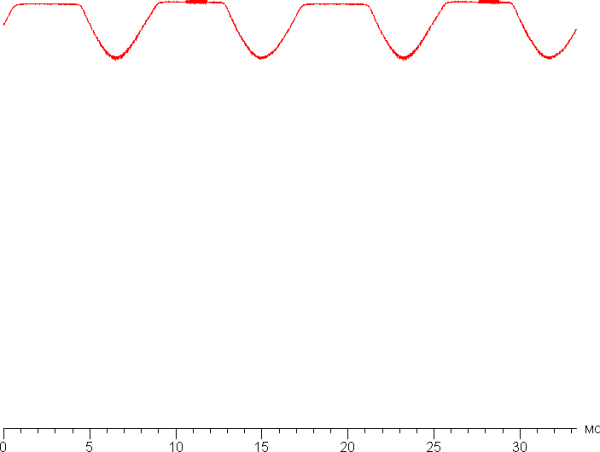
This screen uses an OLED matrix, which is an active matrix based on organic light-emitting diodes. The full-color image is formed using subpixels of three primary colors — red ®, green (G) and blue (B), which are present in equal proportions, which can be confirmed using a fragment of a microphotograph:
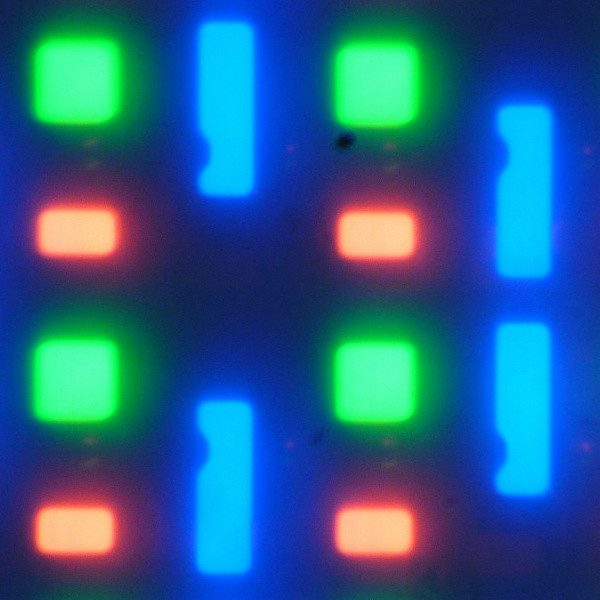
The spectra are typical for OLEDs — the primary color regions are well separated and appear as relatively narrow peaks:
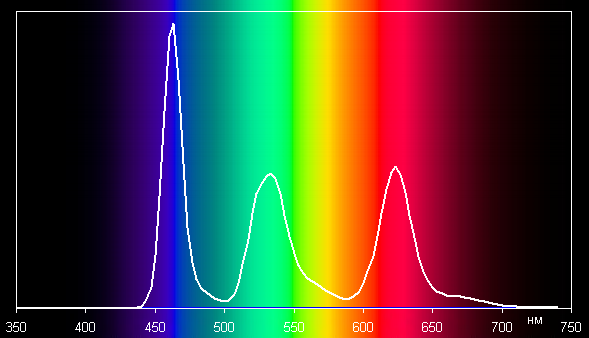
The color temperature of the white field is approximately 7900 K, and the deviation from the spectrum of an absolutely black body (ΔE) is about 1 unit, which indicates an acceptable color balance. Black looks really black at any angle, so the contrast parameter is irrelevant here. When viewed directly, the white field demonstrates excellent uniformity. The screen has excellent viewing angles, with a minimal drop in brightness when viewed at an angle compared to LCD screens, although at large angles the white color slightly goes blue. In general, the quality of the screen is very high.
Now let's look at the GT 5 model with a 41 mm screen. The front surface is a glass plate with a mirror-smooth surface, resistant to scratches. Judging by the reflection, the anti-glare properties are slightly superior to those of the Google Nexus 7 (2013) screen. Doubling of the reflection is minimal, which indicates the absence of an air gap between the layers of the screen. The outer surface has pronounced oleophobic properties (significantly better than Nexus 7), which makes it easier to remove fingerprints and slows down their appearance compared to regular glass. The maximum brightness in flashlight mode was measured at 490 cd/m². Thanks to excellent anti-glare properties, this brightness ensures good screen readability even in strong sunlight. There is a function for automatic brightness adjustment using a light sensor, which can be adjusted. According to subjective observations, this function works correctly.
The graph of the brightness dependence on time shows significant modulation with a frequency of 120 Hz, and when the watch moves quickly relative to the eyes, a stroboscopic effect can be noticed. However, under normal conditions, flickering is not noticeable, since the duty cycle is low, and the modulation phase varies across the screen area. The following figure shows the dependences of brightness (vertical) on time (horizontal) for maximum brightness:
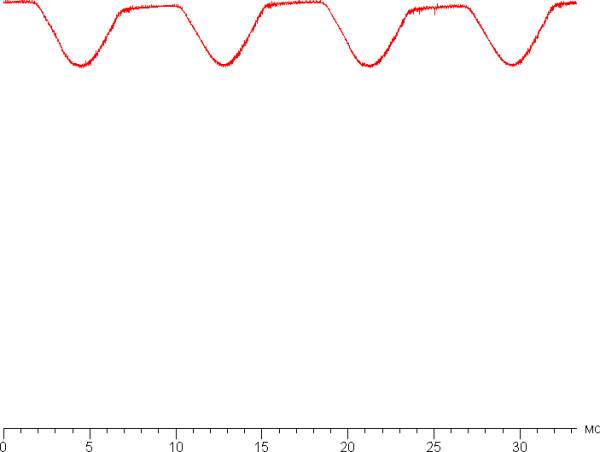
This screen uses an OLED matrix — an active matrix on organic light-emitting diodes. The full-color image is created using subpixels of three colors — red ®, green (G) and blue (B) in equal quantities, which is confirmed by a fragment of a microphotograph:
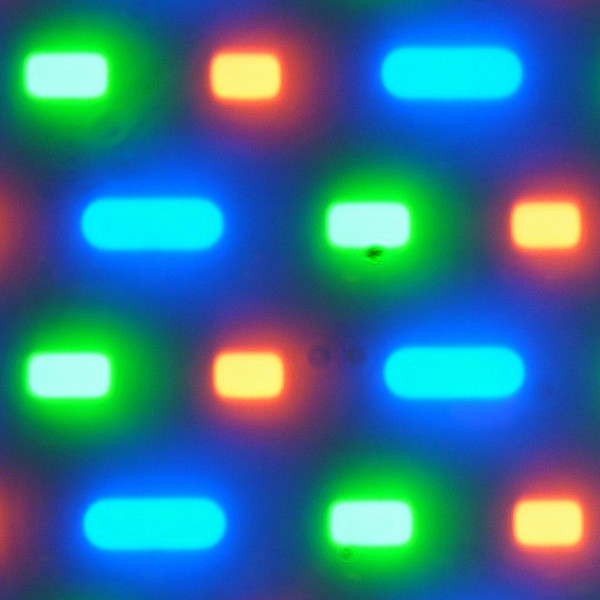
The spectra are typical for OLEDs — the primary color regions are well separated and appear as relatively narrow peaks:
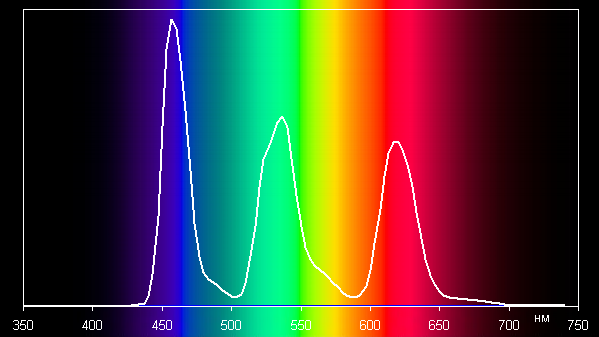
The color temperature of the white field is about 7900 K, and the deviation from the spectrum of an absolutely black body (ΔE) is about 4 units, which indicates an acceptable color balance. Black looks really black at any angle, so much so that the contrast parameter is irrelevant here. When viewed directly, the white field demonstrates excellent uniformity. The screen has excellent viewing angles with a much smaller drop in brightness compared to LCD screens when viewed at an angle, although at large angles the white color slightly goes blue. Overall, the quality of the screen is very high.
Smartphone connection and functionality
The watch runs on the new version of Huawei's operating system, HarmonyOS 5.0.0. However, as before, it is compatible with the main mobile OS: iOS, Android, and HarmonyOS. However, when used with an iPhone, features such as installing third-party apps, controlling music playback, and the ability to send quick replies to messages directly from the watch are still unavailable.
Overall, the changes in functionality are minor. The main functions remain the same: receiving and making phone calls (via a connected smartphone, without support for your own SIM card), receiving messages and notifications, automatic heart rate measurements, blood oxygen levels, stress, skin surface temperature, and breathing during sleep. We remind you that some medical functions may require an additional user agreement or manual activation via a mobile application, so after purchasing, be sure to follow each icon and perform the necessary actions.
Like its more expensive siblings, the GT 5 Pro has a wide range of health monitoring features. These include sleep respiration tracking, pulse wave and arrhythmia analysis, arterial stiffness measurement, ECG, and automatic blood oxygen measurement. Overall, the GT 5 Pro offers all the modern Huawei wearable features, with the exception of blood pressure, which is a unique feature of the Watch D2 (which we’ll review soon). Unfortunately, the standard GT 5 lacks an ECG feature, which is likely a deliberate limitation to increase the appeal of the Pro version.
The manufacturer states that “updating the multi-spatial architecture of the light beams has increased the number of channels for monitoring blood oxygen levels from 4 (the number of channels supported by the previous generation of technology) to 12. This improvement allows the algorithm to take into account a wider range of heart rate signals. In addition, the underlying algorithms used to determine heart rate and blood oxygen levels have been optimized. This was made possible by the implementation of an algorithm for determining heart rate based on artificial intelligence models and a new multi-channel algorithm for determining blood oxygen levels.” It is difficult to verify this statement in practice, since heart rate and SpO2 measurements can vary significantly even on the same medical device. However, it can be noted that during testing, the results of heart rate and SpO2 measurements looked quite reliable.
Among the new options, we note the «Emotions» application. Its essence is that it determines your mood based on your pulse and other body indicators, assessing it as negative, neutral and positive.
The question is how useful this is in practice. However, it is likely to be useful for people who have difficulty managing their emotions and want an external measure of their state. Interestingly, one of the new watch faces, the Pet Panda, displays the results of the Emotions as a cute animated animal. If you are nostalgic for a Tamagotchi, this could be a nice replacement, but with one important difference: this panda’s mood is dependent on your own state.
Among the innovations is the ability to download maps for hiking and active outdoor sports via the Huawei Health app on your smartphone and transfer them to the wearable device. This allows you to use the watch, for example, as a navigator during bike rides, displaying the route on the screen. Of course, all GT 5 models have built-in geolocation modules.
All Huawei Watch GT 5 models, both Pro and regular, have 5 ATM water resistance, allowing you to swim freely in the pool and open water. However, if it was previously stated that the watch is not designed for deep-sea diving, it is now emphasized that the GT 5 Pro supports diving to a depth of 40 meters, adding diving to the list of training. In addition, a new sports mode has appeared in the main menu of applications — «Golf», probably with an eye on the audience interested in this sport, including people like Donald Trump.
To sum up the impressions from using the GT 5 and 5 Pro, we can say that the watches have not made a significant leap compared to the previous generation. However, a set of small innovations and familiar functions transferred from more expensive models creates an overall positive impression of the product. It must be admitted that among wearable devices, especially in their price categories, the GT 5 and 5 Pro certainly stand out in their functionality and are among the leaders.
Autonomous work
We have already noted that Huawei watches stand out for their long battery life. This is a significant advantage compared to the same Apple Watch, which requires recharging every day or two. When we tested the Huawei Watch GT 4 46 mm a year ago, in standard mode (with notifications and all medical functions enabled, but without the AlwaysOn screen), the watch lasted eight days. For the GT 5 and GT 5 Pro of a similar size, the result is about the same. Most likely, the battery capacity remained the same, since the case size has not changed, and the screen has also remained the same. Therefore, autonomy could not have increased or decreased significantly.
The “women's” version will discharge a little faster — in four to five days (depending on the number of phone calls and notifications). However, this is still a decent result. In our opinion, the 46 mm models look more preferable. The ability to work autonomously for more than a week allows you not to worry about charging, which is convenient for short business trips when you do not need to take a charger with you.
Conclusions
Among all the Huawei Watch GT 5 models, the black GT 5 Pro represents the best value for money, as it costs $310. For this money, you get a titanium alloy case and a wide range of features, almost reaching the maximum today (almost, since this watch does not support blood pressure measurement, like, for example, the Watch D and D2). However, the more impressive appearance is on the other models — the GT 5 Pro with a titanium bracelet costs more, $414, and the regular GT 5 can be purchased for $240 for the 46-mm version, although it is slightly inferior to the Pro in terms of functionality, especially in terms of the lack of ECG.
Nevertheless, everyone will be able to choose the option that suits their needs. It is almost impossible to go wrong: all GT 5 and GT 5 Pro models look impressive and offer good functionality. This is not a revolutionary update, and the new product does not cancel the relevance of the previous models, but it is certainly a small but significant step forward, which is already an achievement.

